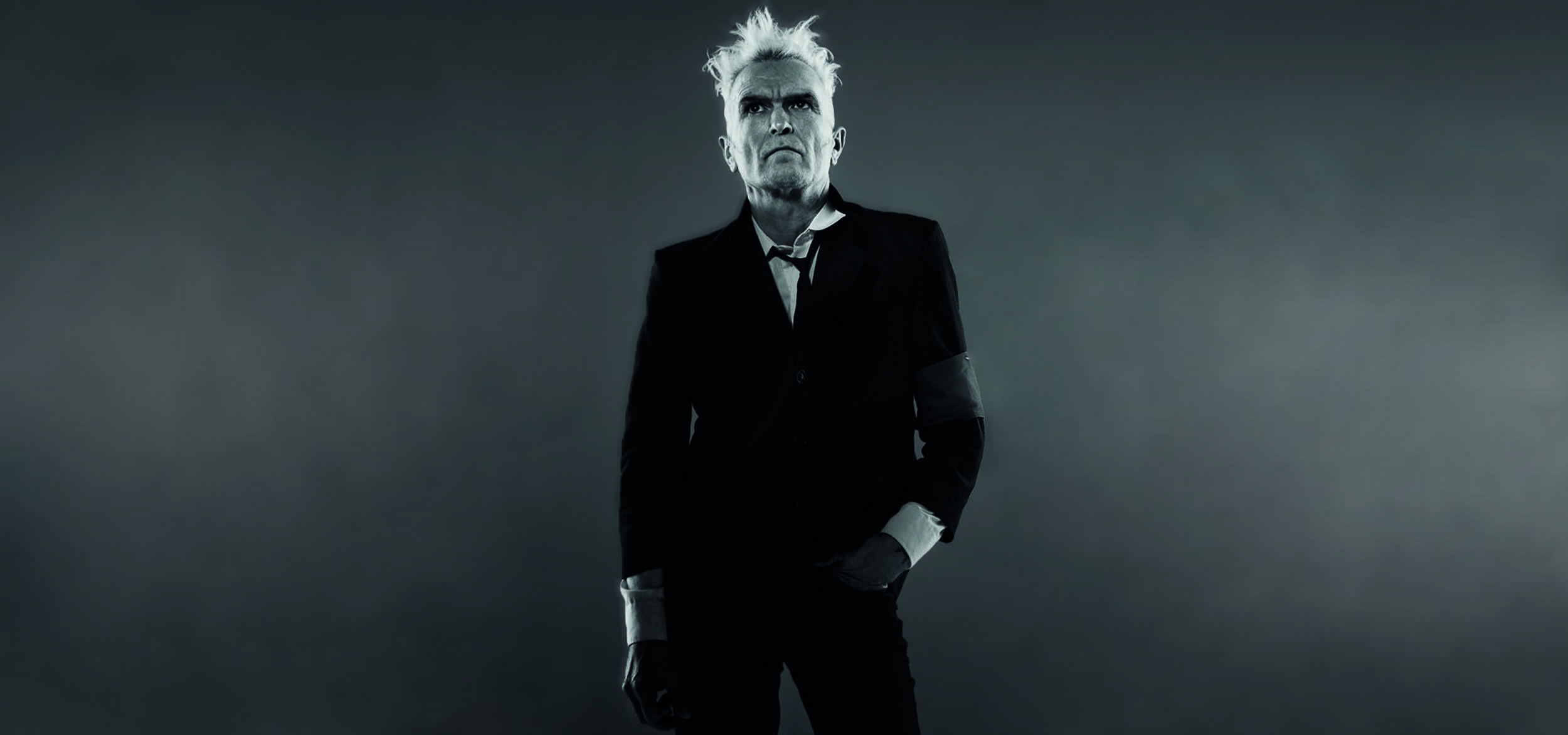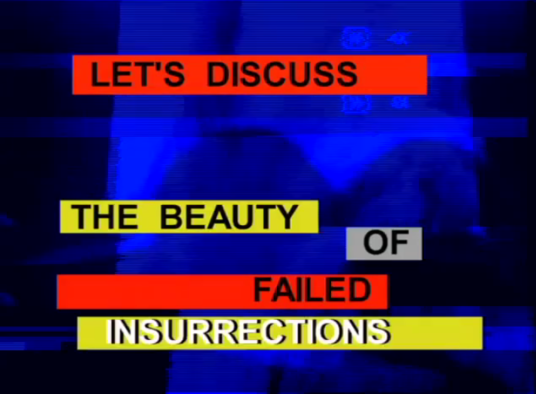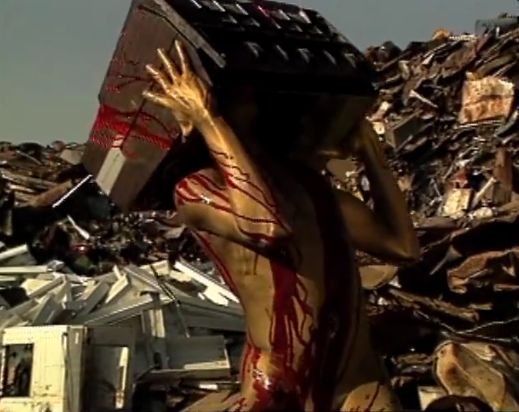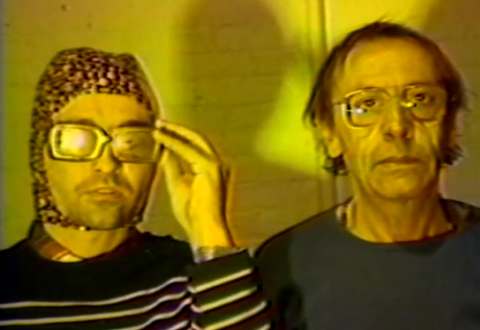
Istvan Kantor - Revolutions
In 2017, Vidéographe published Istvan Kantor – Video Anthology a USB box set of 29 video works curated by Etienne Desrosiers. This project allowed us to add thirty four of the artist’s videos to our catalogue. The program Revolutions includes works from Istvan Kantor – Video Anthology and has been curated to suggest different entry points to this unceasingly dynamic body of work.
Curator, Vidéographe
List of works in program
Istvan Kantor - Revolutions
By Karine Boulanger
In 2017, Vidéographe published Istvan Kantor – Video Anthology a USB box set of 29 video works curated by Etienne Desrosiers. This project allowed us to add thirty four of the artist’s videos to our catalogue. This program includes works from Istvan Kantor – Video Anthology and has been curated to suggest different entry points to this unceasingly dynamic body of work.
Istvan Kantor’s video work is driven by a hope for perpetual revolution and a fear of its failure. He hijacks the symbols of 20th Century revolutionary movements—slogans, flags, uniforms, hymns, marches and manifestos, adopting warlike postures and attitudes, and a propagandist tone. One minute a rebel and the next a dictator, Kantor has developed a flamboyant persona, full of charisma, panache, and provocation.
Kantor left communist Hungary in the mid-1970s and it is easy to see traces of his childhood in his work. Revolutionary Song (2005) evokes the Hungarian revolution of 1956 and contains previously unseen biographic elements. Kantor sings with humor and fury about a trip to the barbers with his father in Paris, during which he prayed for a catastrophe or mass uprising to save his long hair. The link between revolution and individuality, history and absurdity could hardly be clearer.

Kantor’s revolutionary drive escapes any political affiliation. No institution, no power finds favor in his eyes; from the museum to the police to the mass media, none will escape the furious fighting spirit that permeates his work. Pushing this logic to its extreme, our anti-hero even flees liberty in Escape from Freedom (1991), a film whose aesthetic calls to mind refugees and those escaping a totalitarian regime. As a way of negating all ideologies, Kantor literally invented a new ‘ism’: Neoism, an ambiguous and protean philosophy and, above all, a catalyst for subversive and provocative actions. Video is just one aspect of a practice that also comprises music, performance, writing, and more.
The simple aesthetic of Kantor’s early video work (UFO, Maria) would rapidly evolve into an orgy of effects—an assault on the viewer’s senses. His first videos take a conceptualist approach that interrogates the image and the history of art. For example, the litany of oppositions in Infraduction (1982), which is not devoid of humor, points to the absurdity and porous nature of categories and definitions (‘I am post-impressionist, he is anti-post-impressionist’ etc.). Before long, a phenomenon of proliferation and accumulation took off: computer graphics and then digital animation altered the colors and figures, text invaded the screen, images were superimposed, music and songs saturated the soundtrack. A number of videos from the early 2000s made intense use of recycled and misappropriated images. Kantor drew on the most diverse cinematic sources, from the Hollywood blockbuster to Duras, from Dean to DiCaprio (Accumulation, The Blood of Many Filmmakers, Song of the Anti-hero, White Boy from the East (I Am Asian)).

The majority of Kantor’s videos take place in a dystopian, indeed post-apocalyptic future that he would reinvent and develop from The Black Cherry Syrup Manifesto (1982) to Scripture (2016). The human being is watched, cloned, controlled, assaulted or abandoned in the ruins of our civilization. Certain of Kantor’s works touch on contemporaneous events but even they have a sense of prophecy and the end of the world. Barricades (1992) and Anti-credo (1987) addresses instances of police repression against marginal groups in New York. Among the most accomplished of Kantor’s works, Barricades is a veritable prophecy of destruction. While the video’s imagery shows an apparently infinite line of police barricades, as if encircling the world, its text alerts us to catastrophes to come (‘planets will explode and a shower of pointed electrons will pierce the flesh’, etc.). Anti-credo, a short masterpiece of editing, turns a park occupied by artists into a poem about urban ruins. In another vein, the images of hooded and shackled bodies in Black Flag (1998) evoke torture and enslavement. While the film pre-dates the scandal of Abou Ghraib, it seems to predict it. The film also decries the poverty in Ontario at the end of the 1990s. Similarly, The Legend of Joan Dark (2007) recalls altogether too familiar images of political hostages and other martyrs.

In this world of chaos, resistance is articulated through blurred genres, a festive, even orgiastic spirit, a hybrid of machine, sexuality, humor and the absurd. Identity is forever shape-shifting and blended for Kantor, who is also known as Monty Canstin, Amen! and Esmeralda Eldorado. Everyone disguises themselves, reinvents themselves, is reborn. The performer’s body is of crucial importance, whether it be that of Kantor or of one of the numerous participants that share speech and image in his group works (Nineveh, Brothers and Sisters, Lebensraum/Lifespace - Spectacle of Noise, The Party is Over). Blood becomes a synecdoche, one minute an artistic material, the next an assault weapon. In Blood and Gold, the blood donated by participants unites the neoist community. In Alles Klar (1986), Kantor (who once studied medicine) sprays his blood on a canvas after it has been drawn from his arm. A meeting of medical and artistic gestures.
This program attempts to reflect these futuristic, activist or aesthetic veins and to showcase the artist’s constant reinvention. It is just a modest jab in a prolific and uncompromising practice.
Translation: Sarah Knight
Thanks: Istvan Kantor, Etienne Desrosiers
Image: Portrait of Istvan Kantor, © Istvan Kantor







